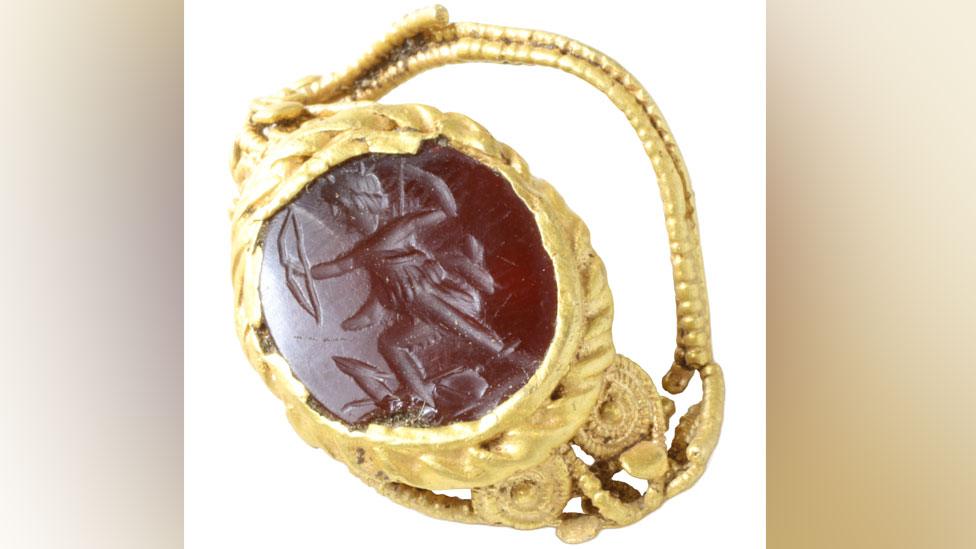Experts choose favourite treasure finds of 2024
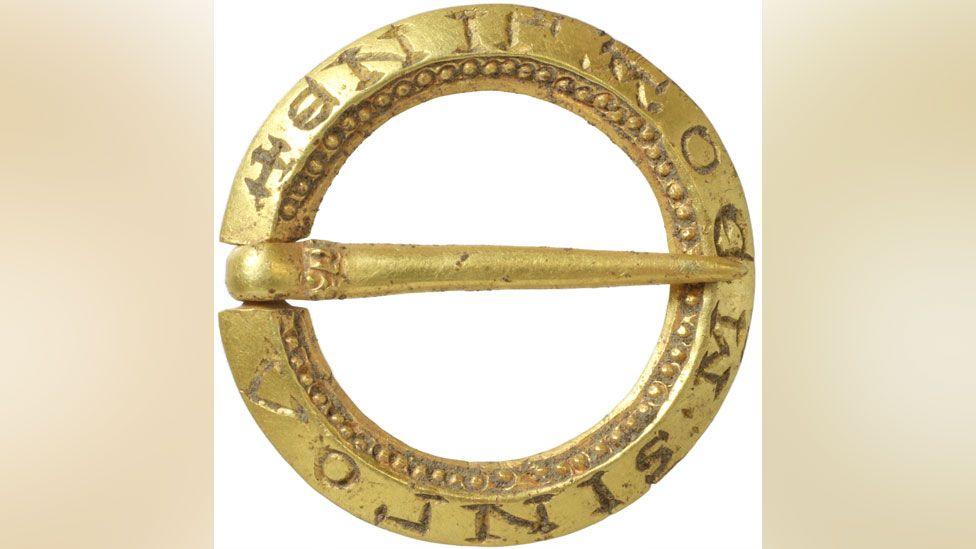
A beautifully-made ring-shaped brooch was owned by someone very well-off between the 13th or 14th centuries until it was lost near Wymondham, Norfolk
- Published
A "magical" medieval gold brooch and a Sutton Hoo-era ring are among five pieces of treasure chosen by experts as their finds of 2024.
Every year, dozens of metal detectorists go out into the countryside on the hunt for buried treasure.
If they are lucky enough to unearth objects that are more than 300 years old and made from gold or silver, they will need to report them to their local finds liaison officers.
Once their finds are declared treasure by a coroner, many will go into museums' collections.
Helen Geake, the finds liaison officer for Norfolk, and Lori Rogerson, who does the same role for Essex, have been looking back at the objects that fired their imagination this year.
A 'gorgeous buttery gold' brooch

Helen Geake wondered if the inscription on the brooch was in a code only the wearer might have understood
Dr Geake singled out a "beautifully-made" medieval gold brooch, 17mm (0.6in) in diameter, discovered at Deopham, near Wymondham, Norfolk.
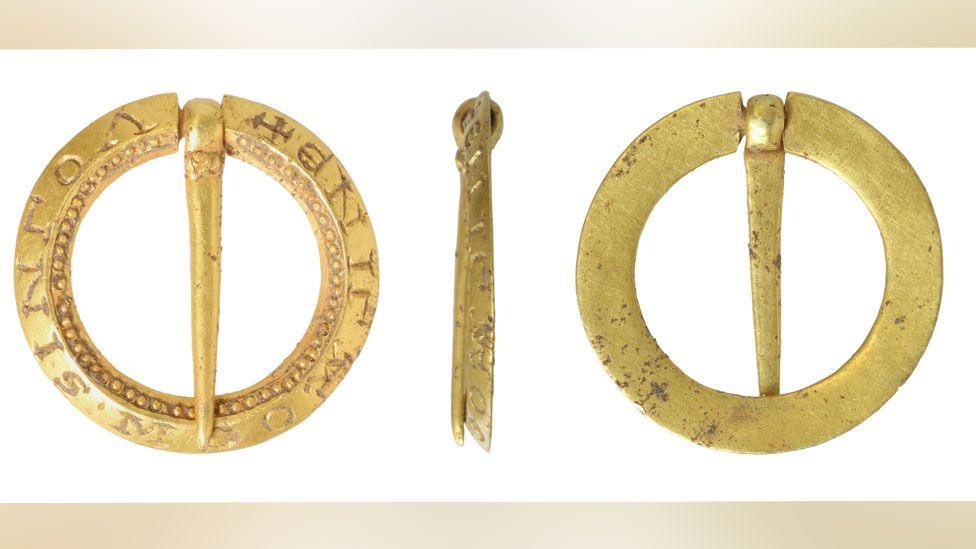
The brooch, which weighs 1.5g (0.05oz), will stay in Norfolk, joining a museum collection
She was intrigued by the motto etched on its circumference, which is hard to interpret.
She said she believed it was written in a code that perhaps only its wearer might have understood.
"Or it might not be understandable to them either, but they would have read it as some sort of magical protection which can only be read by an angel or a good spirit," Dr Geake said.
"Oh and I love the buttery colour of these pure gold things, it's just gorgeous."
'It's 1,000 years older than I thought'
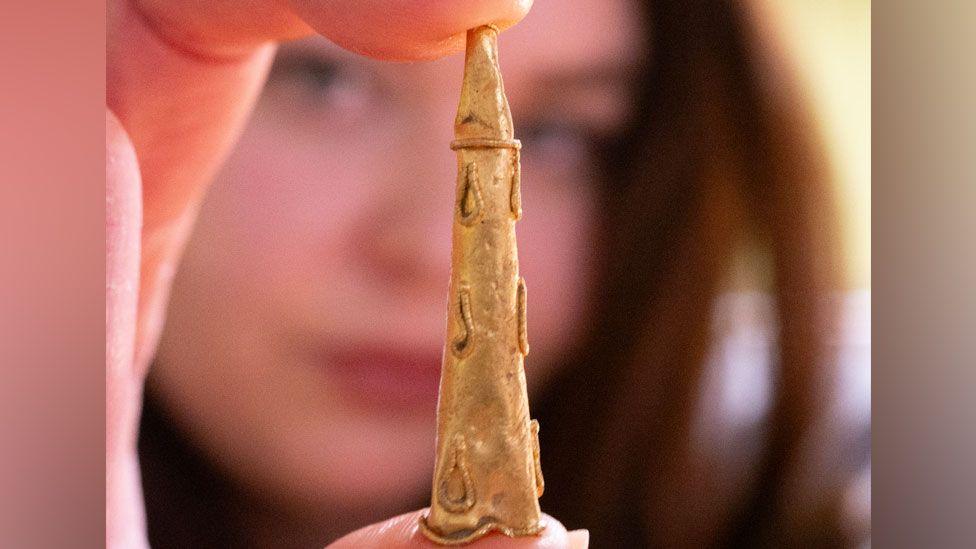
Lori Rogerson's research revealed the conical piece was made from a sheet of rolled gold and decorated with gold wire and dates to the Roman era
When a 39mm (1.5in) gold conical find first arrived on Miss Rogerson's desk she initially thought it was probably Tudor (1485-1603), certainly post-medieval.
"It wasn't until I sat down to do the research that I came across something almost identical in the British Museum and realised it is a Hercules club pendant or earring and a lot older than I'd thought," she said.
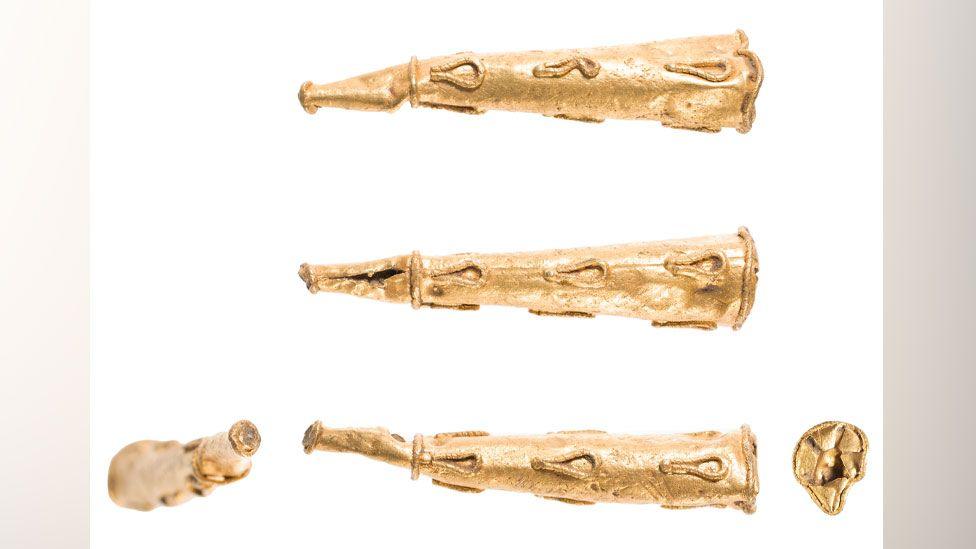
A club was one of the main attributes of the Greco-Roman hero Hercules, who according to mythology completed 12 labours or missions
To her delight, the discovery, made at Radwinter was Romano-British and is similar to others found with the Thetford Treasure.
Miss Rogerson said: "These are status objects, but it is even more special because it relates to the hero Hercules, external and this was a lot more meaningful to whoever lost it.
"To us he's just a character from fiction, but to its owner, he was a significant part of their pagan belief."
Saffron Walden Museum is hoping to acquire it.
''Its owner must have looked at it every day'
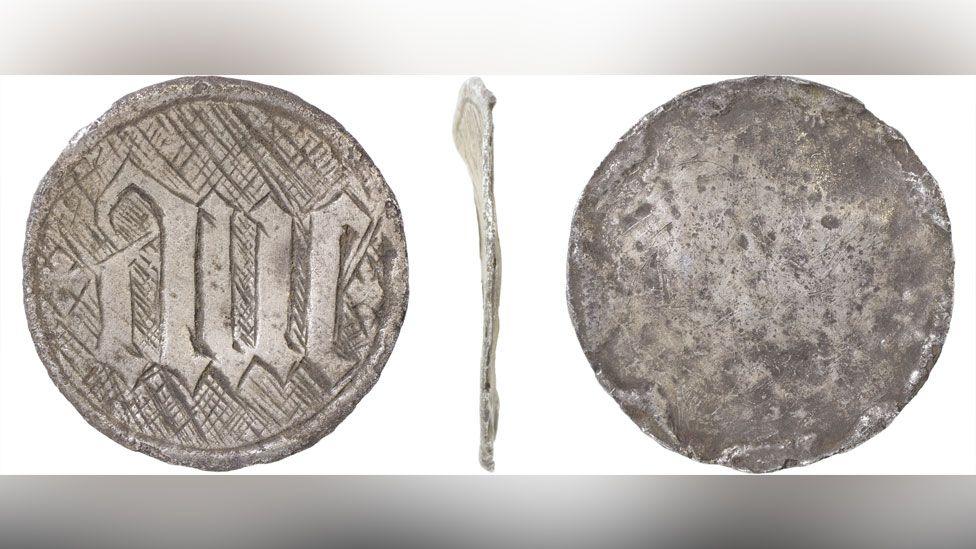
This silver disc was probably a late medieval hollow reliquary or box pendant
"It looks slightly amateurish, I like the way letters started and then got smaller towards the edge," said Dr Geake about a medieval silver box pendant dating to between 1400 and 1500.
Its inscription reads ave, the Latin for hail, which is the first word of the Roman Catholic prayer to the Virgin Mary, external.
"It also feels very individual and you can imagine the person who owned it saying their Hail Marys to it - like a rosary - she might have looked at it and used it every day," the historian said.
The find was built like a locket with a hollow space within and "while demonstrably religious, it might have also had something talismanic for the person wearing it".
Discovered near Salthouse on the north Norfolk coast, Norwich Castle Museum and Art Gallery is hoping to acquire it.
'It's on a par with iconic Sutton Hoo finds'
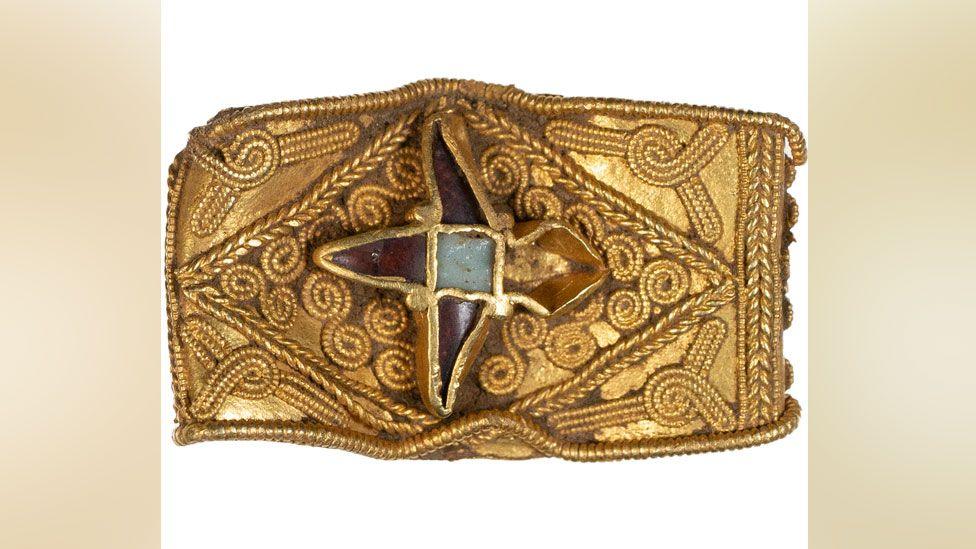
The finely-worked 27mm long by 16mm wide (1.08 by 0.6in) ring has gems inset into a bird in flight design in its centre, although the "head" gem has been lost
"The gold work from this period just fascinates me, you can see how intricate the decoration was and how much skill was required to create such things," said Miss Rogerson.
She was speaking about an exquisite, although sadly squashed, Anglo-Saxon ring discovered in Epping Forest, which she would "have definitely tried on if I could".
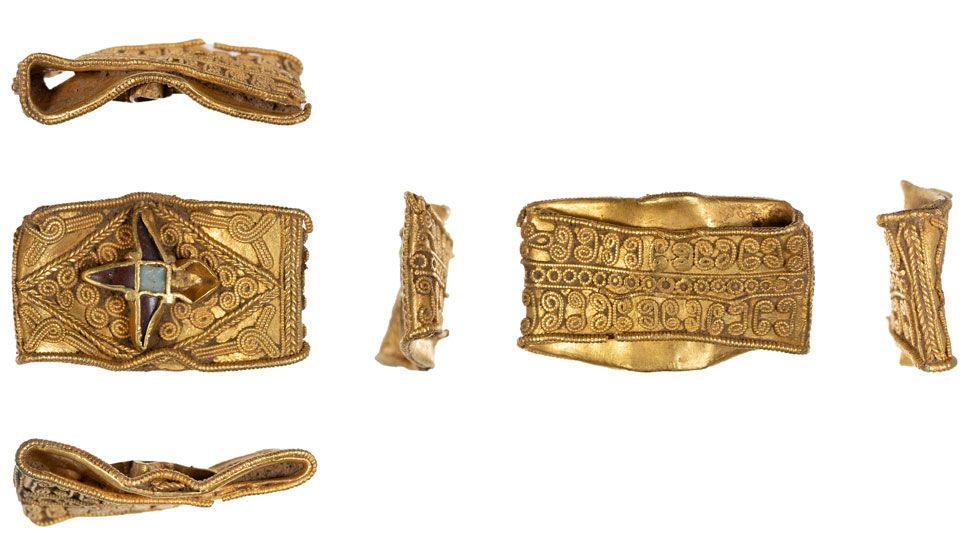
Miss Rogerson believes its owner was royal and said the reverse is worn down, "as if that's where his finger rested on the hilt of his sword"
The Treasure Valuation Committee is currently assessing, external the ring's value - determining how money will be shared by the finder and landowner - and when that is complete, Epping Forest Museum hopes to add it to its collection.
Miss Rogerson said: "It is contemporary with the 7th Century Sutton Hoo ship burial.
"It felt like a piece of something on a par with the objects from those iconic burial artefacts.
"And it also really evokes its owner, who was probably well-known throughout Essex and further afield at the time."
A 'cheeky-faced' medieval strap end

The strap-end's design may have come from medieval bestiaries, which were "the origin for JK Rowling's book Fantastic Beasts and Where to Find Them", said Dr Geake
Strap-ends were used by medieval people to weigh down the ends of their fabric belts, which hung down to their knees.
This late medieval gilded silver example, discovered in a field at Roudham, near Thetford, was a "rare find".
Dr Geake said: "It's like a cartoon, an animal with a human personality - it's got a cheeky little face, I like its little hat and it's wearing clothes - like Donald Duck."
She also chose it because it has been donated to Norwich Castle Museum, so it does not have to find the funds to buy it.
The finder and landowner chose to waive the fees set by the Treasure Valuation Committee.
"It's a really special item and the fact it has been donated is a really lovely Christmas present to the people of Norfolk from the pair," she said.
Get in touch
Do you have a story suggestion for Norfolk?
Follow Norfolk news on BBC Sounds, Facebook, external, Instagram, external and X, external.
- Published20 October 2024
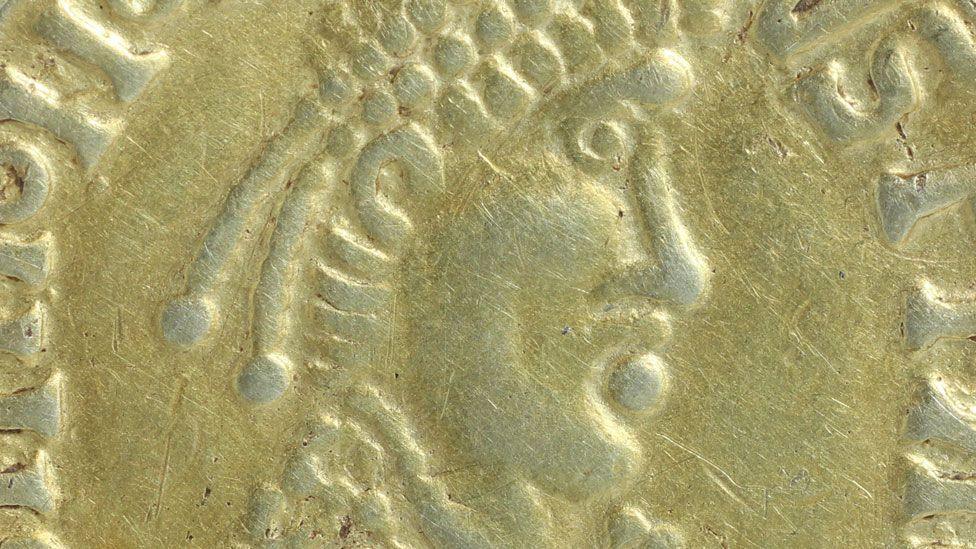
- Published18 February 2024
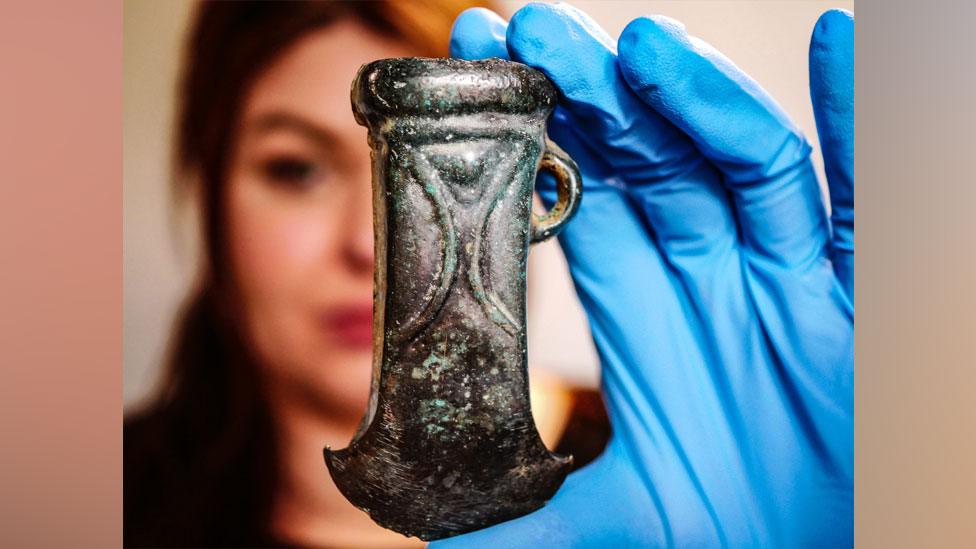
- Published24 January 2024
